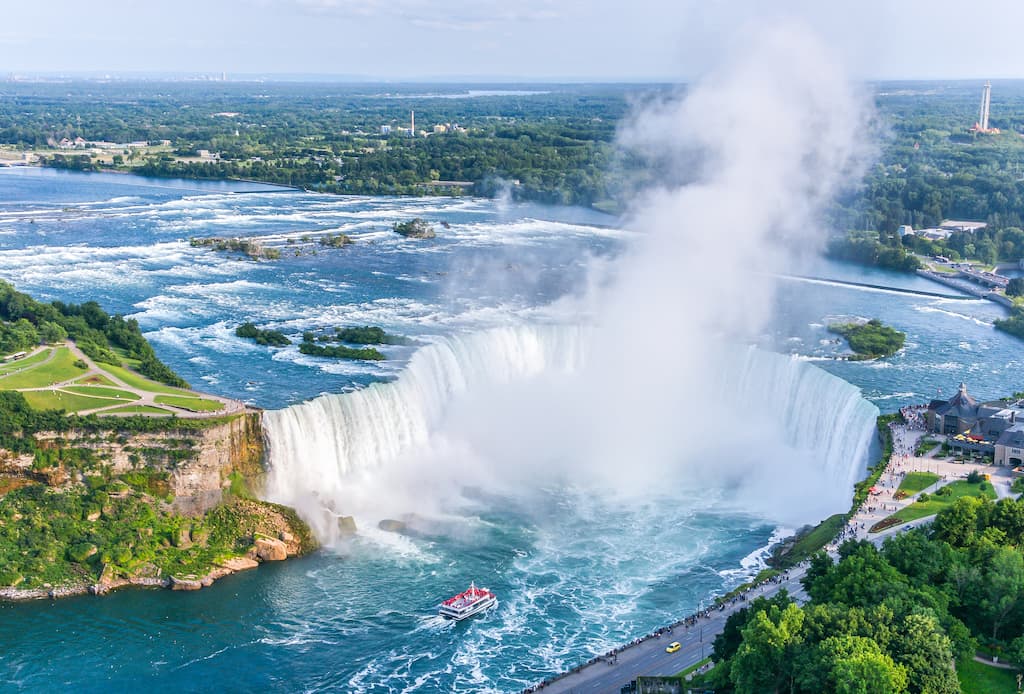Cenote Hubiku Valladolid – Tips & Prices

Swimming in a cave cenote is one of the most enchanting activities you can do on your Yucatan itinerary, and Cenote Hubiku is one of the better ones of all Valladolid cenotes!
Situated halfway between Valladolid Mexico, and the ancient Mayan ruins of Ek Balam, Hubiku Cenote is a super easy Yucatan cenote to visit on a combination cenote tour from Tulum or Cancun. Visiting Cenote Hubiku is also an excellent day trip if you’re staying in one of the hotels in Valladolid.
Cenotes of Yucatan played a very important role in the Mayan world, and today you cannot fully appreciate the Mayan heritage without visiting at least a few cenotes. Some of the best cenotes in Yucatan include the Instagram-famous Cenote Suytun, the super fun Cenote Oxman, where you can jump into the refreshing water from a Tarzan robe, the open Cenote Saamal and Cenote Chukum that features a zip line.
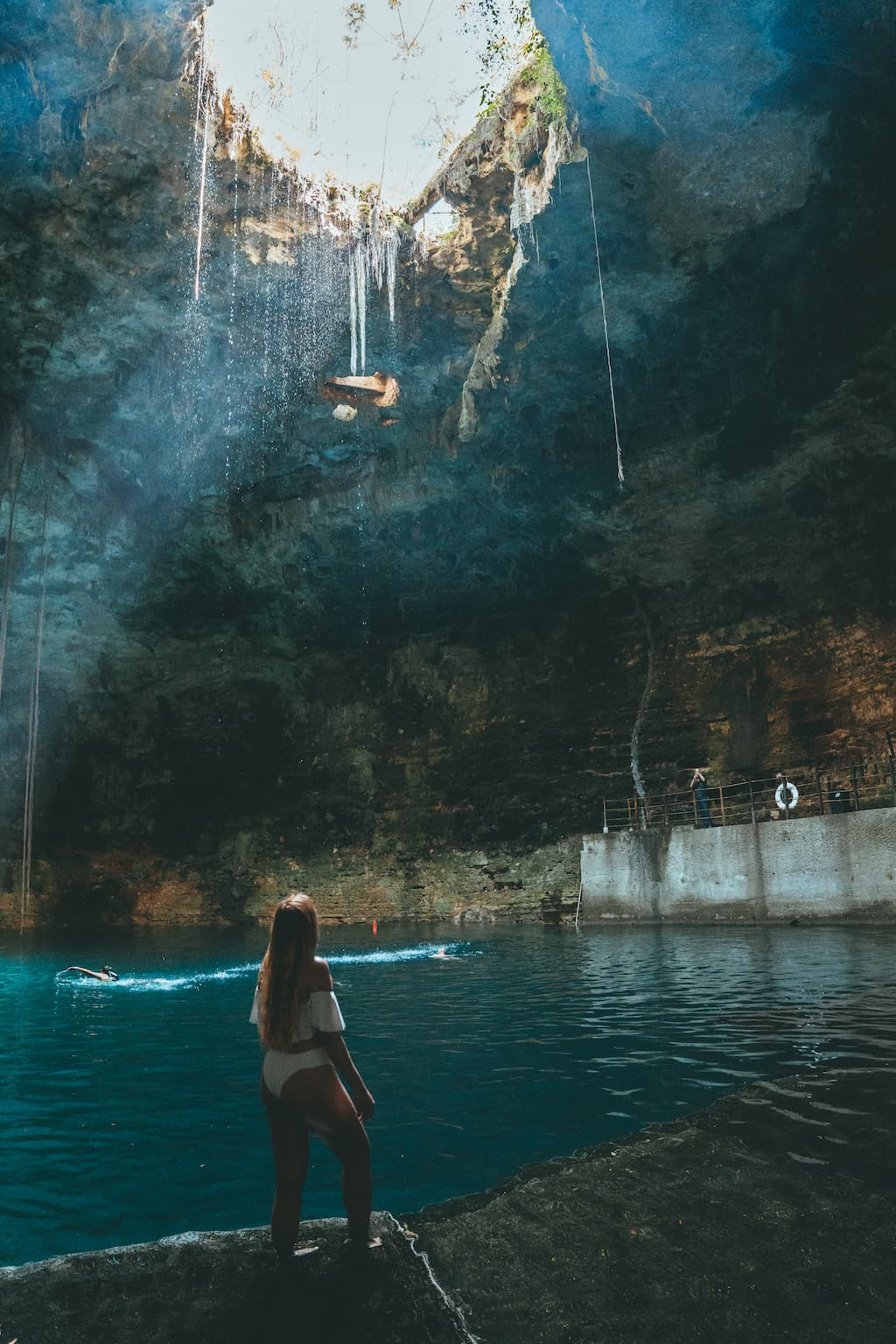
Read the next sections to find out all useful information about Hubiku, including Cenote Hubiku photos
Best Tours of Cenote Hubiku
Here are some best cenote tours you can take either from Tulum or Cancun (also possible from Playa del Carmen) that combine a visit to Cenote Hubiku with the ancient Mayan ruins of either Chichen Itza or Ek Balam.
Hubiku Cenote Tours Tulum
Option 1 Private Tour:
Chichen Itza + Cenote Hubiku + Valladolid with Viator
Option 2 Chichen Itza + Cenote Tour Tulum:
Chichen Itza + Cenote Hubiku + Valladolid Tour
Option 3 Ek Balam + Cenote Tulum Tour:
Hubiku Cenote Tours Cancun
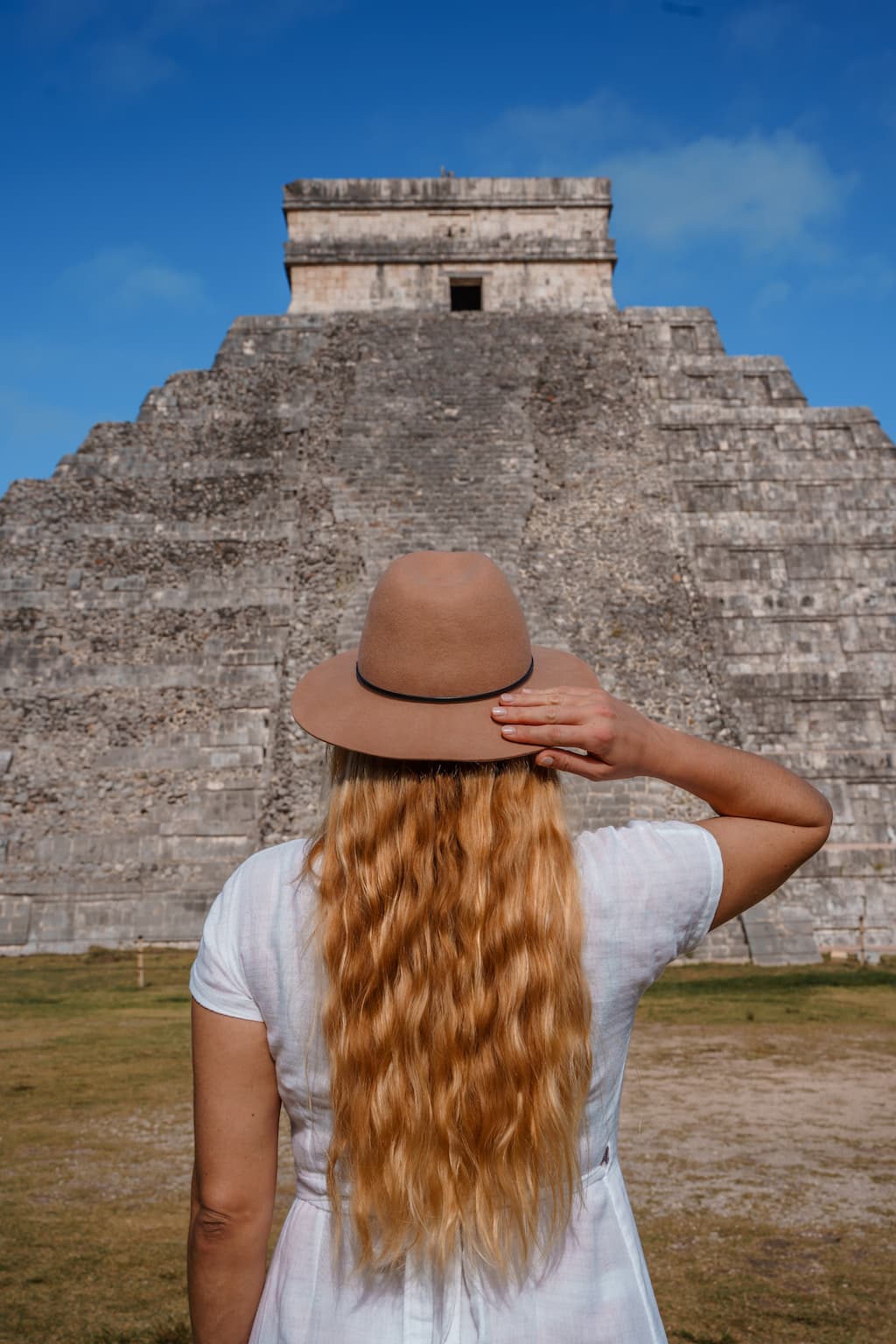

Option 1 Private Tour:
Chichen Itza + Cenote Hubiku + Valladolid
Option 2 Chichén Itzá day trip with Cenote Hubiku and Valladolid:
Chichen Itza + Cenote Hubiku + Valladolid Tour
Option 3 Ek Balam + Cenote tour Cancun or from Playa del Carmen:
Where is Cenote Hubiku?
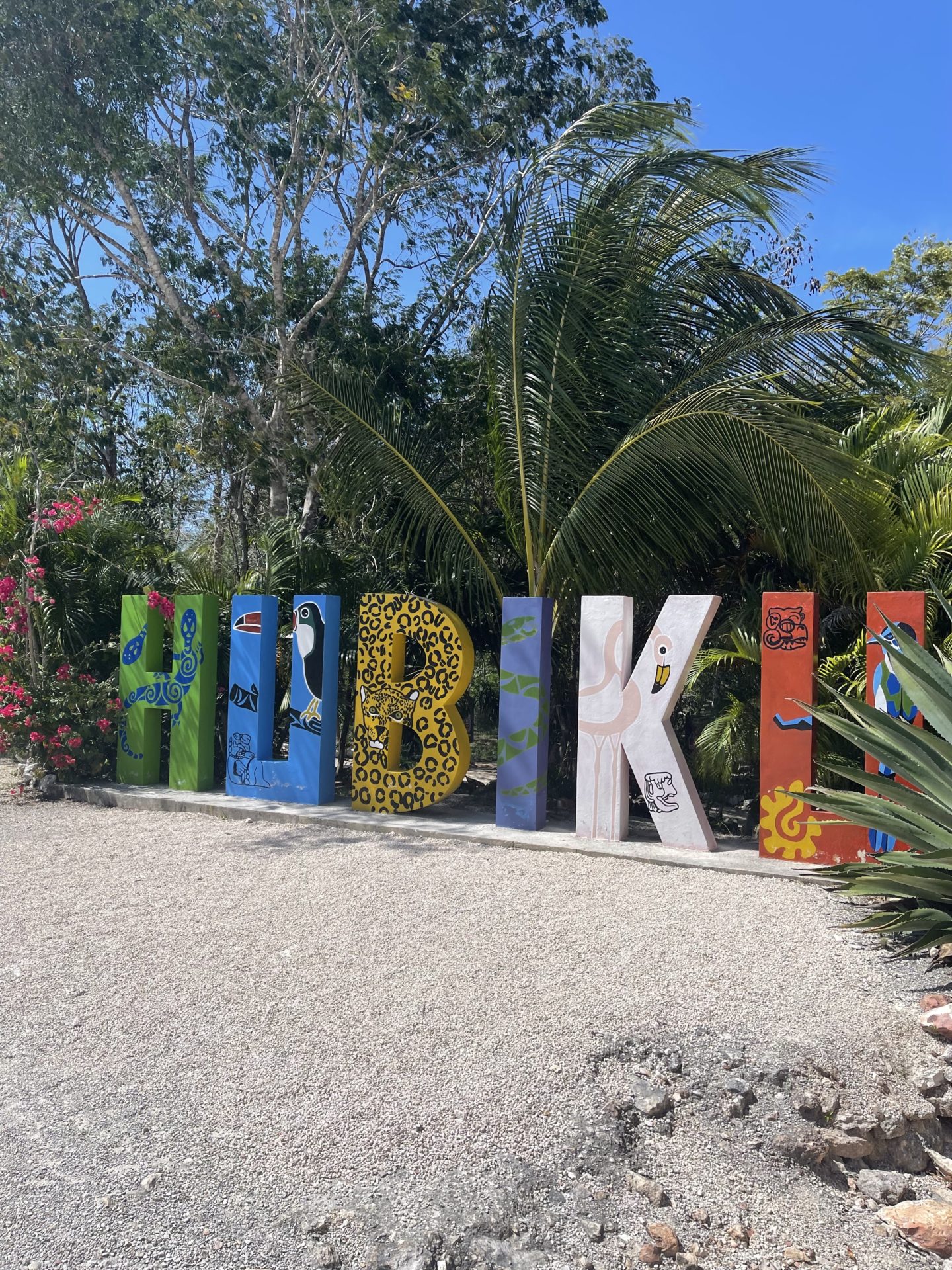

You can find Cenote Hubiku, 17 km north of the city of Valladolid, on the way to the ancient Mayan pyramid of Ek Balam. If you’re staying in Valladolid, you can easily visit Hubiku Cenote independently, and I highly recommend combining the trip with a visit to Ek Balam or other fantastic cenotes near Valladolid, such as Cenote Palomitas or Cenote Agua Dulce, Cenote Secreto Maya and Cenote Sac-Aua.
From Valladolid | 17.2 km (27 minutes drive)
From Tulum | 117 km (2 hours drive)
From Playa del Carmen | 146 km (over 2 hours drive)
Cenote Hubiku Cancun | 161 km (2 hours 15 minutes drive)
From Merida | 165 km ( 2 hours 20 minutes drive)
Hubiku Cenote Map


How to Get to Cenote Hubiku Valladolid?


Hubiku Cenote by Car
For the best flexibility, especially if you’re travelling with a group of friends or family and can spread the cost between a few people, I recommend hiring a car and driving to Cenote Hubiku independently.
Having your own car will give you a lot of flexibility to create your own itinerary, spend as much time as you please at the cenotes and leave at the time that suits you most.
Renting a car in Mexico may be a little intimidating at first glance, but really the route between Tulum, Playa del Carmen or Cancun towards Valladolid is super simple.
For a hassle-free experience, to avoid hidden costs and scams, I recommend booking your car online from a recommended car comparison website such as Discover Cars. You can then easily collect the car at Cancun airport or get it delivered to your Cancun hotel.
Cenote Hubiku from Valladolid


If you’re staying in Valladolid and haven’t got a car, you can also rent a scooter in downtown Valladolid. There are a few scooter rental shops available, we used K’ox Balak and had a very good experience.
Expect to pay at least 500 pesos (just over $24) per day, and don’t forget to ask for a discount if you’re renting for more than one day.
My personal experience of riding a scooter around the Valladolid area was very good, the roads are decent and not very busy.
Hubiku Cenote from Cancun
For those that prefer to avoid driving in Mexico, I recommend taking an organised cenote Cancun tour. There are many different fantastic cenote excursions available from Cancun that combine cenote swimming with a visit to Chichen Itza or Ek Balam and Valladolid.
Cenote Excursions Cancun:
Another option to get from Cancun to Valladolid is taking the ADO bus. The trip from Cancun to Valladolid takes just over two hours.
TIP | ADO website only takes Mexican payment cards, so I recommend purchasing your bus ticket via BookaWay.
If you want to get to Valladolid directly from the Cancun airport, I recommend going with a private transfer, which will save you a big hassle at the airport. If your flight arrives during the day, you can also take an ADO bus to downtown Cancun and then another bus to Valladolid.
Read also: Cacun to Valladolid – Tips & Prices
Cenote Hubiku Yucatan from Tulum
If you’re staying in Tulum, you have a great choice of cenote tours from Tulum, such as this one:
Private Tour: Chichen Itza Day Trip + Hubiku Cenote Excursion + Valladolid
Another way of getting to Cenote Hubiku Mexico, from Tulum is taking the ADO bus to Valladolid. You can catch this bus from the Tulum bus station. The Tulum Valladolid ticket costs around 150 pesos ($8), and the trip will take around 2 hours. Once in Valladolid, you can either rent a scooter or hail a taxi to get to the cenote.
What to Expect at Hubiku Cenote?





Despite the fact that Cenote Hubiku is a stopover for some of the cenote tours from Cancun, Hubiku felt like an off-beaten track destination to me.
When you arrive at Hubiku, there is a large complimentary parking area and a building on your right where you can purchase your entrance ticket.
At the parking lot, you will also find the colourful Hubiku letters if you wish to snap a quick shot before heading to the cenote. On the way to the cenote, you’ll go past a couple of information boards about the Mayan civilisation and a few displays of Mayan artefacts.
At the cave entrance, a few Mayans dressed in their traditional outfits may offer you a quick Mayan ceremony and a photo for a small tip.


Also, don’t forget to snap a photo at the top of the cave, where you get an excellent panoramic view of the cenote. If you visit around midday on a sunny day, you’ll get a nice light beam coming through a roof opening and illuminating the water in the sinkhole.
Swimming at Cenote Hubiku Yucatan
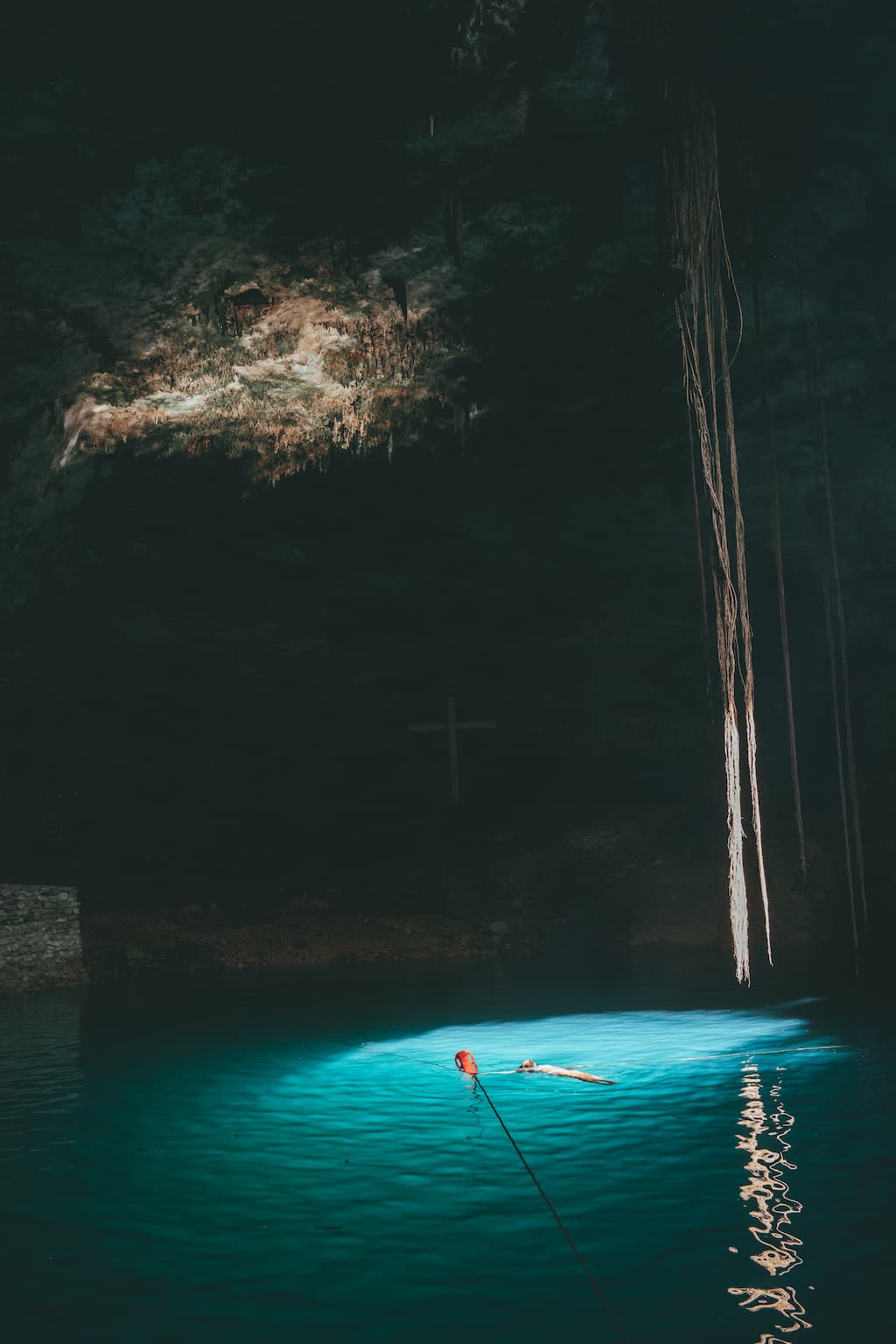

The water in the cenote is super refreshing and has around 20 degrees Celsius (68 F), which is a little chilly but typical of cavern cenotes. The cenote water has an intense blue hue and is very clear. Taking a dip in the cenote pool is a truly refreshing experience and a must!
The robes in the pool indicate the area where swimmers can go, this is to protect the edges of the cenote and its fragile ecosystem. Make sure you swim to the light beam in the middle!
Cenote Hubiku Depth
Hubiku Cenote has a maximum depth of 27 meters and is 20 meters high.
Cenote Jumping
Cenote diving is not allowed at Hubiku, so you won’t find here any diving platforms or robes. This is typical of dark cavern cenotes, while at the open cenotes, you normally can do all sorts of fun jumping.
Cenote Snorkeling
While Cenote Hubiku is a little dark for being great for snorkelling, you may be able to spot some fish, especially catfish depending on the light inside the cenote cave.
Hubiku Cenote Facts


Cenote Hubiku Price
The ticket to Hubiku Cenote costs 150 pesos ($7.40) and does not include the use of lockers and lifevests, which can be separately purchased inside the cenote cave for $2 and $1 respectively. For 350 pesos (over $17), the ticket includes a buffet lunch without drinks.
Hubiku Opening Hours
Cenote Hubiku opening hours are between 9 am and 5 pm.
Facilities at Cenote Hubiku Mexico
Parking at Cenote Hubiku Yucatan




Cenote Hubiku is situated off the main road number 295, through a few kilometres long dirt track access road. The road has many small stones, so navigate it slowly whether you’re driving a car or a motorbike.
As you approach the Cenote Hubiku property, there will be a large car park that is free of charge for the cenote customers. The motorbike area is situated to the right of the hacienda Hubiku.
Ticket Counters




Ticket counters at Gran Cenote Hubiku are located inside the yellow building at the bottom of the car park area.
Outdoor Museum at Gran Cenote Hubiku




After purchasing your ticket, there is a 5-minutes walk to the cenote. On your way, you will see a few outdoor displays of Mayan artefacts and some information boards about the Mayan culture, such as numbers in their ancient language.
Changing Rooms, Lockers & Showers

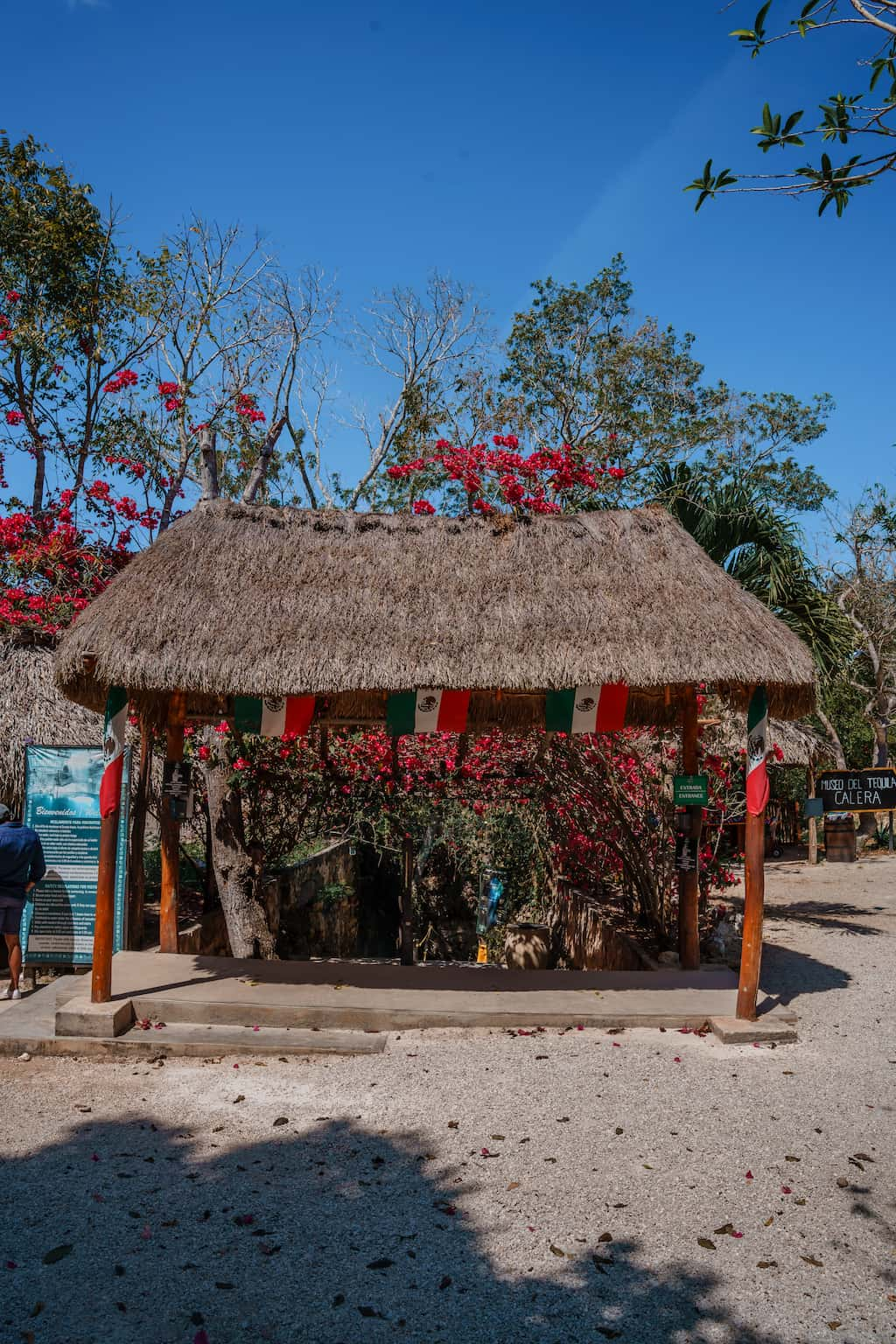


Changing rooms and showers are located next to the cenote entrance. It is compulsory to take a shower before taking a cenote swim. The lockers are located inside the cenote cave, and there is an extra charge of $2 for their use. There is also plenty of space where you can leave your belongings on the stairs.
Lifejackets
The use of lifejackets is not compulsory at this cenote, but they’re available to rent inside the cave, next to the lockers, for $1.
If you’re not a strong swimmer, it’s better that you swim in a lifejacket. The water is a little cold, and you may get tired faster. Also, floating in a lifevest inside the cenote is an incredible experience!
Hubiku Cenote Restaurant
Similar to other cenotes in Valladolid, Hubiku Cenote features a buffet-style restaurant. If you’re planning to stay at Hubiku for lunch, make sure you purchase the ticket that includes the buffet lunch. The buffet has a good selection of local cuisine dishes, including vegetarian options.
Cenote Bar


For those that want to toast a special occasion or simply have an ice-cold cerveza after swimming in the cenote, there is a small bar that serves alcoholic beverages right outside of the cenote cave.
Tequila Museum at Cenote of Hubiku
There is also a small tequila museum within the Hubiku estate, where you can learn about the tequila-making processes and get a few free samples!
More Tips for Visiting Cenote Hubiku Yucatan
What’s the Best Time to Visit Hubiku Cenote Valladolid Mexico?
As with any other cenotes in Yucatan, the best time to visit Cenote Hubiku is in the morning to have the whole cave entirely to yourself.
Another great time to visit this Valladolid cenote is around midday when on a sunny day, a large light beam shines through the roof opening illuminating the cenote cave.
However, the cenote pool is large with plenty of space to enjoy a cenote swim even if there are more people, so you don’t need to worry too much about getting here at a certain time.
How Much Time Do I Need for Hubiku Cenote?
The minimum time you’ll need to enjoy the cenote is about 1-2 hours. This time will be enough to change clothes, shower, take some photos, take a refreshing dip into the cenote pool, and then chill a little before the next destination on your cenote hopping itinerary.
What to Take With You
Cash | Bring some cash with you to cover the ticket cost and lunch. Most Valladolid cenotes have remote locations, and although card machines are more common these days, there is always a possibility that the wifi connection won’t be strong enough to take your payment.
Action camera | If you want to take some photos of you swimming in the cenote, get a Go Pro, which is super durable and waterproof, perfect for any adventure!
Well-fitted swimsuit | Visiting and swimming in cenotes is super adventurous, and you will need a well-fitted swimsuit that will stay in place while you’re jumping, diving and snorkelling in the cenotes.
Fast-drying towel | Take with you a fast-drying towel made of microfibre, such as a Fit-Flip Beach Towel, that won’t take up too much space in your bag.
Flip-flops | A pair of good quality flip-flops will also come in handy at the cenotes. I perosnally love Havaianas!
Thermal water bottle | Stay hydrated and bring with you a thermal water bottle to keep your water cool and help reduce the use of plastic. My favourite is Chilly’s Bottle. It’s a little more expensive, but the price comes with superb quality. Our water literally stays icy cold the whole day!
Other nearby Valladolid Cenotes
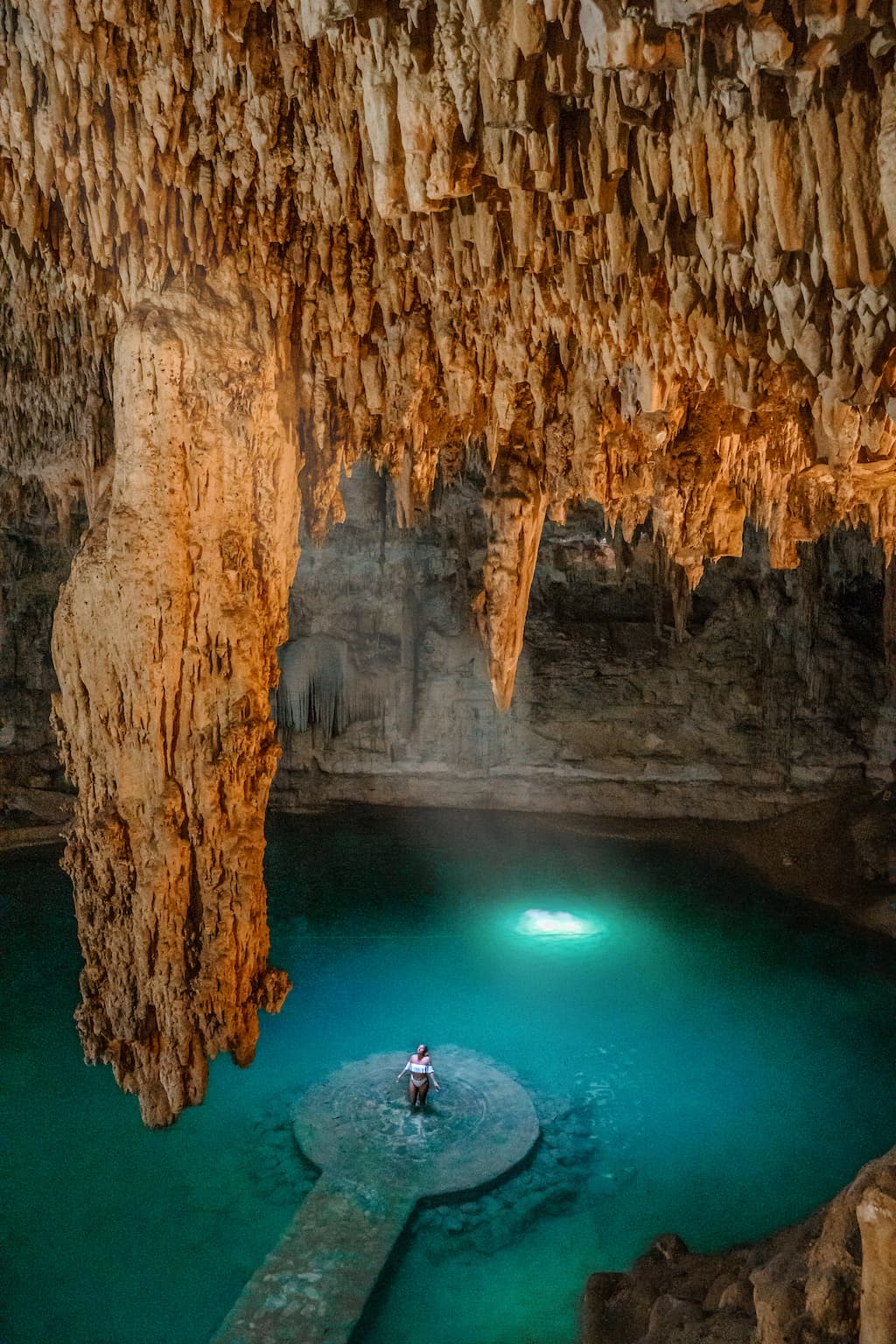

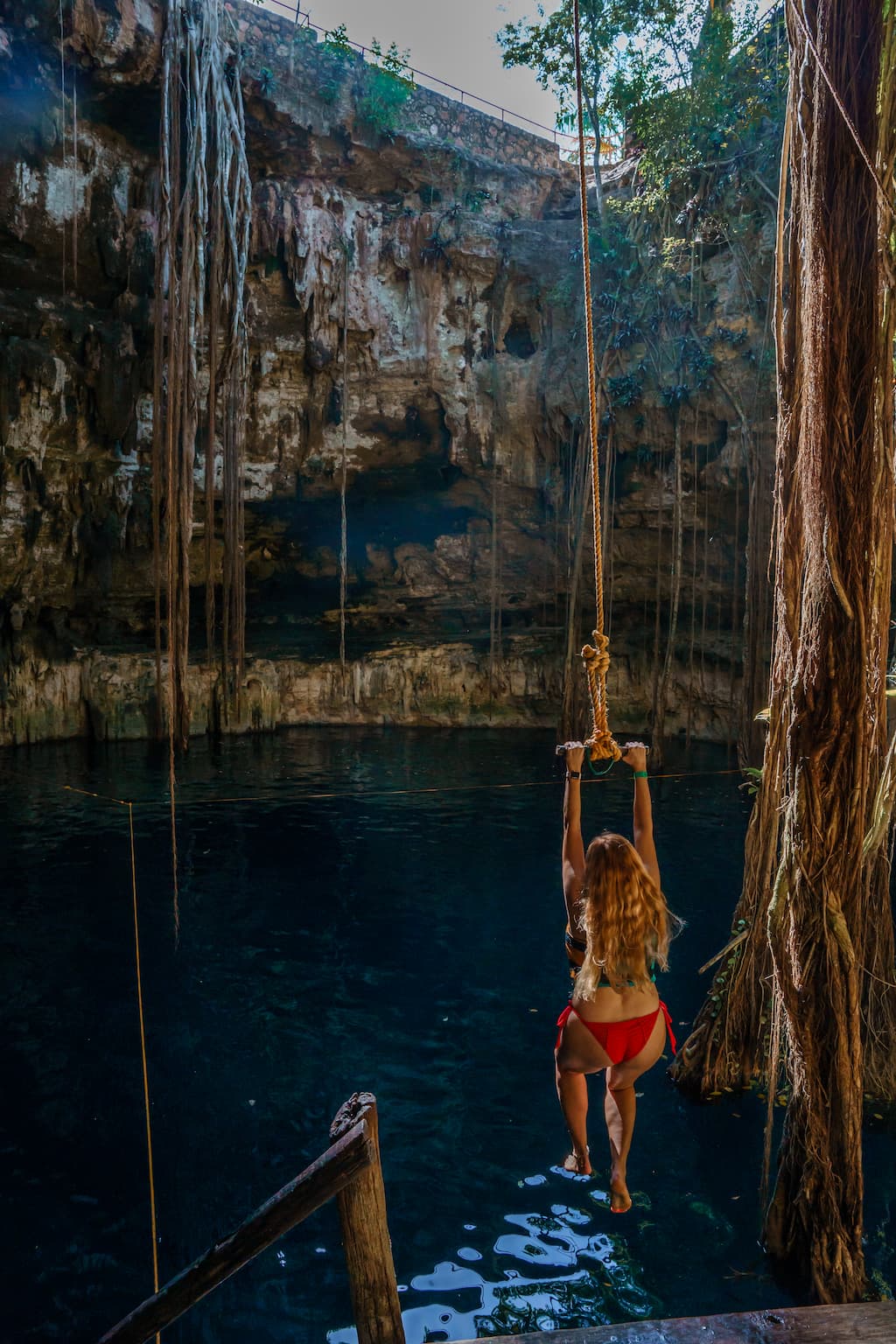

Cenote Suytun | One of the most famous cenotes in Mexico, Cenote Suytun is a must-see place on your Yucatan itinerary! I bet you’ve seen a photo of it on Instagram! It’s the one with a circular platform in the middle of the cenote pool and impressive stalactites hanging from the cenote roof. Directly above the platform, there is a small opening in the cave roof, and at around midday on a sunny day, a beautiful sunbeam shines through the roof over the platform.
Cenote Oxman | Cenote Oxman is a semi-open cenote with lush lianas hanging from the top. Two sets of wooden stairs provide access to the cenote pool, and there is also a jumping platform with a Tarzan robe, which is the best part of Oxman Cenote. Oxman is also a lovely cenote to spend your whole day, there is a lovely pool and sunloungers area, which access is included in the standard ticket price. Cenote Oxman is located only a few kilometres away from the centre of Valladolid.




Cenote Saamal | Cenote Saamal is also situated near (only 2.6 km) Hacienda San Lorenzo Oxman Cenote, and you can combine the two cenotes into one visit! Saamal is an open cenote with a small waterfall feature and an awesome jumping platform.
Cenote Dzitnup | Another great cenote to visit near (4 km) Saamal & Oxman Cenotes is Cenote Dzitnup. Dzitnup actually consists of two cenotes – Cenote Xkeken, which is a cavern cenote and a semi-open Cenote Samula, with crystal clear water and a large roof opening which brings a beautiful light beam inside the cenote cave.
For more incredible cenotes, check this post – A Guide to 15 Epic Valladolid Cenotes
Cenote Hubiku Valladolid: FAQ
What are Cenotes in Mexico? | Cenote Meaning
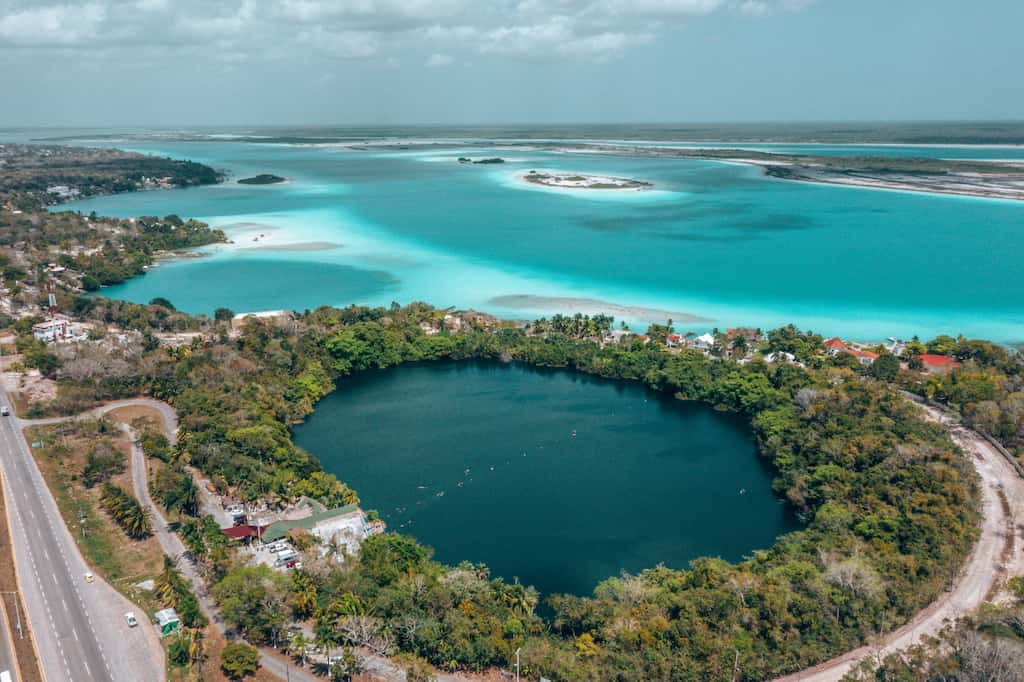

Cenote definition / cenote translation – sinkhole
So, what are cenotes? The term is mainly associated with the Yucatan Peninsula in Mexico, but cenotes can be found all over the world. Cenotes are sinkholes formed by collapsed limestone rocks that expose groundwater. Swimming in cenotes is super delightful and very refreshing. The cenote water is typically cool and very clear, thanks to the water being filtered through the ground. The colour of the water varies from deep blue to bright emerald and depends on the rock type and fauna. Cenote depth also varies, ranging anything from a few metres up to hundreds of metres in depth!
Mexican Cenotes in Mayan Culture
The name cenote is derived from the Mayan word Dz’onot, which means “cave with water”. During the Mayan civilisation, cenotes were an important source of water. Apart from having a practical meaning, Mayan cenotes also had a spiritual significance. They were considered to be the gateway to the underworld (Xibalba), a place where gods met and a sacred place of worship where Mayans had their spiritual ceremonies and left offerings.
Types of Cenotes
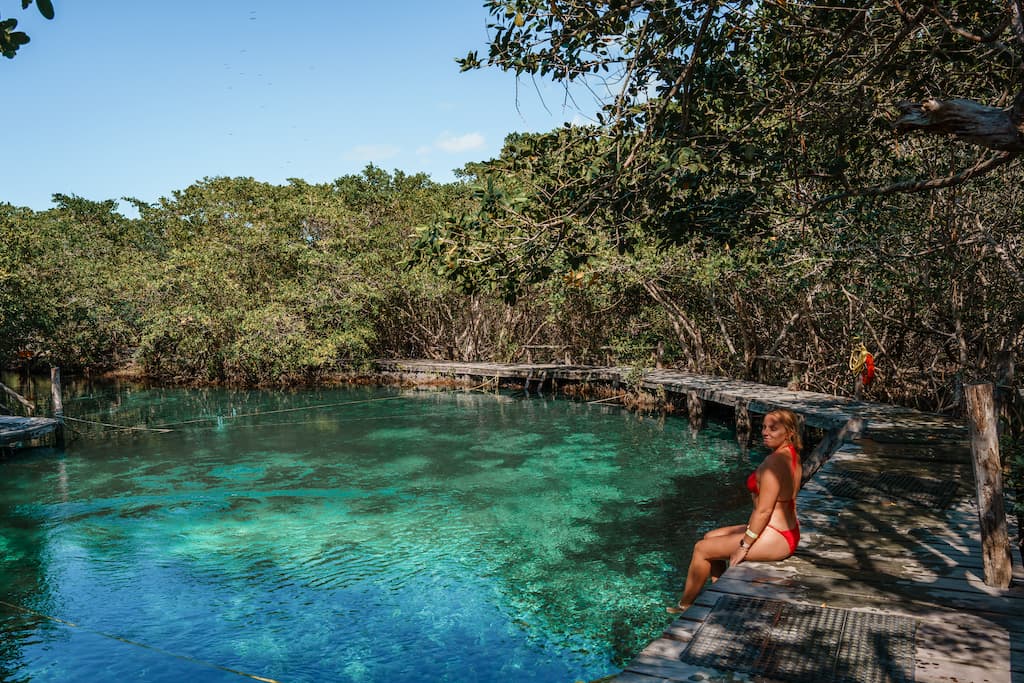

There are hundreds and hundreds of cenotes on the Yucatan Peninsula, and you’ll be pleased to know that some of the top Yucatan cenotes are located near Valladolid. If you want to explore some of the best cenotes near Valladolid, I highly recommend staying at least 3-4 days in the city. There are at least four types of cenotes Mexico is renowned for.
Underground cenotes in Mexico (cavern cenotes) | Underground cenotes are the youngest water wells that are entirely covered by rock mass, with only a small opening in the cave roof that lets in minimal sunlight. They are super interesting to visit, so make sure you include at least one cavern cenote during your visit. Cavern cenotes in Valladolid include Cenote Xkeken and Cenote Palomitas.
Semi-open cenotes | Semi-open cenotes are much older than cavern cenotes. For millions of years, part of the limestone that covered the well has been eroded and collapsed inside, exposing the underground water. These cenotes let in more light and have more vegetation. If you visit them at the right time, usually around midday, you can witness an amazing spectacle of light, when a light beam comes through an opening in the roof, illuminating the water inside the cenote, creating an extraterrestrial-like effect. Best semi-open Valladolid Mexico cenotes include Cenote Suytun and Cenote Samula.
Open cenotes | Open cenotes are the ones where the cave roof entirely collapsed, exposing the whole water well to the outside environment. These cenotes have the lushest vegetation and are great for a day out. Xcache and Oxman cenotes Valladolid Yucatan are open.
Ancient Cenotes | Ancient cenotes are the oldest Riviera Maya cenotes that can even be 66 million years old! The roof, as well as the walls of the ancient cenote, are completely eroded, making ancient cenotes look more like lagoons. Most Bacalar cenotes are ancient cenotes.
Is Cenote Hubiku Worth Visiting?
That depends. While each cenote is unique, visiting one cenote of each type is enough for your cenote experience. Cenote Hubiku is a particularly good stop if you’re planning to visit the Mayan ruins of Ek Balam because it’s literally on the way. Other great cave cenotes that are similar to Hubiku are Cenote Palomitas, Cenote Samal and Cenote Chukum.
Mal xxx






